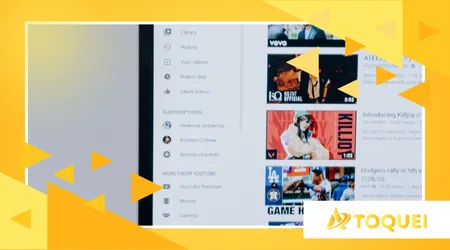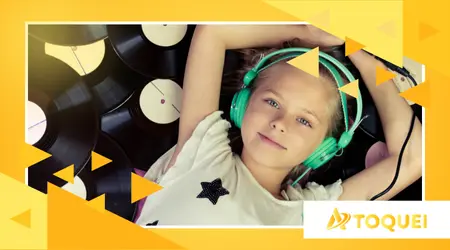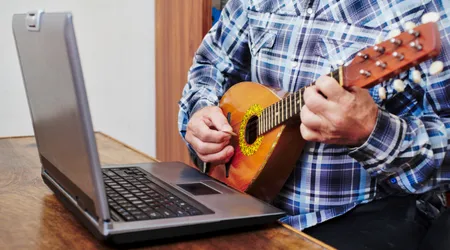Top 5 YouTube Channels for Kids to Learn Music

5 YouTube Channels for Kids to Learn Music represent a vibrant portal to the sonic universe, shaping young minds with the magic of melody and rhythm.
Advertisements
Music has been proven to enhance cognitive development and sensitivity. The screen becomes a global classroom, accessible at any time.
But which digital platforms truly excel in this regard? This columnist, attentive to trends and content quality, immersed himself in this ecosystem.
We've selected options that combine high-quality entertainment with solid, reliable music instruction.
Early musical exposure is a cornerstone of child development. It stimulates brain areas linked to language and logical reasoning.
Advertisements
YouTube emerges as a modern facilitator, overcoming geographic and financial barriers. It offers diverse and engaging content, effectively capturing children's attention.
The platform democratizes access to different genres and musical instruments.
What Are the Essential Criteria for Choosing a Children's Music Channel?
It's not enough to just have children's songs. A quality channel needs to have clear and engaging musical pedagogy.
Visual and sound production must be impeccable to maintain interest. The veracity and accuracy of musical information are non-negotiable.
Safety and age-appropriate content are top priorities. Interactivity and playful learning also factor into the selection process.
Read more: The best children's books about music to stimulate creativity
Top 5 YouTube Channels for Kids: Discovering Notes and Sounds

Next, specialized curation focuses on channels that deliver real value in musical learning. They transform the abstract aspect of music into something concrete and fun.
It's a journey that begins with the simple clapping of hands and evolves into the complexity of symphonies.
1. How Does Bita World Introduce Harmony and Diversity?
Mundo Bita transcends pure entertainment with its colorful animations and captivating stories. Its songs often incorporate Brazilian and global rhythms, expanding the cultural repertoire.
They use real musical instruments in their compositions, showcasing authentic sounds. This provides children with a gentle yet rich introduction to the basic elements of music.
The quality of the music production is remarkably high.
++ How to set up a music corner for young children
2. What makes Baby Einstein different in auditory development?
The globally renowned Baby Einstein channel focuses on sensory stimulation. It features classical compositions by Bach, Mozart, and Beethoven in soothing arrangements.
The idea is to expose babies and young children to complex musical patterns. This, according to educators, helps form important neural connections early on.
It is an approach more focused on passive listening and appreciation.
++ Difference between electronic and acoustic drums: which is more worthwhile?
3. How Does the “Patati Patatá” Channel Teach Rhythm and Movement?
The clown duo Patati Patatá is a phenomenon of popularity and engagement among children. Their songs are extremely rhythmic and encourage movement and dance.
This connection between sound and movement is vital for motor coordination and a sense of rhythm. They teach, in a joyful way, the importance of timing musical and body expression.
It's fun and completely physical learning.
++ 5 YouTube Channels That Make Learning Fun for Kids
4. Why is the “Masha and the Bear – Music” Channel Relevant to the Musical Tale?
Masha and the Bear, an international hit, has a section focused on narrative songs. The songs tell stories, which helps children understand narrative musical structure.
They understand how music can amplify emotions and develop characters. It's an excellent example of how the art of sound integrates with storytelling.
The soundtrack is a key element of the storytelling of the series.

5. How Does “Little Baby Bum” Use Lullabies and Musical Literacy?
Little Baby Bum is a YouTube giant focused on lullabies and children's rhymes. These songs are essential for early musical literacy.
They repeat simple melodic patterns and lyrics that are easy to memorize and sing. The channel is an effective tool for introducing vocabulary and a sense of tone.
The repetition feature facilitates musical retention and learning.
How Important Is Family Interaction in This Process?
Channels are tools, but parental involvement is the driving force behind learning. Singing along, dancing, and discussing the sounds amplifies the impact.
Music becomes a moment of connection and family affection. Turning viewing into a joint activity maximizes educational results.
The experience of learning music should be shared.
A study by Dr. Anita Collins, published by ABC News in 2024, highlights that children involved in music lessons, even virtual ones, demonstrate better performance in non-verbal IQ tests and reading skills.
This observation underscores the power of music. In other words, investing in good music for children isn't a luxury; it's an intellectual investment.
What to Expect from the Future of Music in Digital Education?
The trend is for these channels to evolve into more interactive classes. We can expect the use of augmented reality and gamification in the future.
Remote instruction on real instruments, for example, could become more common. The potential of platforms like YouTube for education is limitless.
Imagine music as a language. 5 YouTube Channels for Kids to Learn Music are dictionaries and grammars.
If learning a second language opens cognitive doors, learning music builds its own castle. After all, music is the universal language of emotions, isn't it?
Here's an original example: If a child learns, through Bita, the rhythmic difference between a northeastern xote and a samba, he or she is not just listening; he or she is encoding Brazilian musical culture.
Another original example: Watching Baby Einstein play Bach can be compared to nourishing a plant with the best fertilizer. The result is more robust and subtle auditory development.
The Cognitive Benefits of Music in Childhood
| Cognitive Benefit | Description |
| Language Improvement | Music reinforces phonology and auditory processing. |
| Memory Enhancement | Singing songs helps exercise short-term and long-term memory. |
| Motor Coordination | Rhythm and dance improve coordination and timing. |
| Mathematical Skills | Musical patterns and structure are linked to logical reasoning. |
Therefore, the 5 YouTube Channels for Kids to Learn Music are more than entertainment. They are catalysts for holistic development. Don't underestimate the power of good content on screen.
Frequently Asked Questions
What is the ideal age to start using these channels?
Exposure can begin from early childhood, with channels like Baby Einstein, focused on babies. More interactive content, like Bita or Patati Patatá, is great for ages 2 or 3 and up.
Is it necessary to have instruments at home?
It's not mandatory, but having simple instruments, such as a small xylophone or a toy keyboard, can complement the experience. The important thing is auditory and rhythmic stimulation.
How to avoid excessive screen time?
Set a daily time limit and prioritize quality content. Turn screen time into an active activity, singing and interacting with your child. Moderation is key.
Do channels replace formal music lessons?
No. They are excellent introductory and supportive tools. Formal lessons offer in-depth technical instruction, sheet music reading, and practice on a specific instrument, which is irreplaceable.
